Blog
In-context image processing support through our Chat On Topic widget
July 21, 2024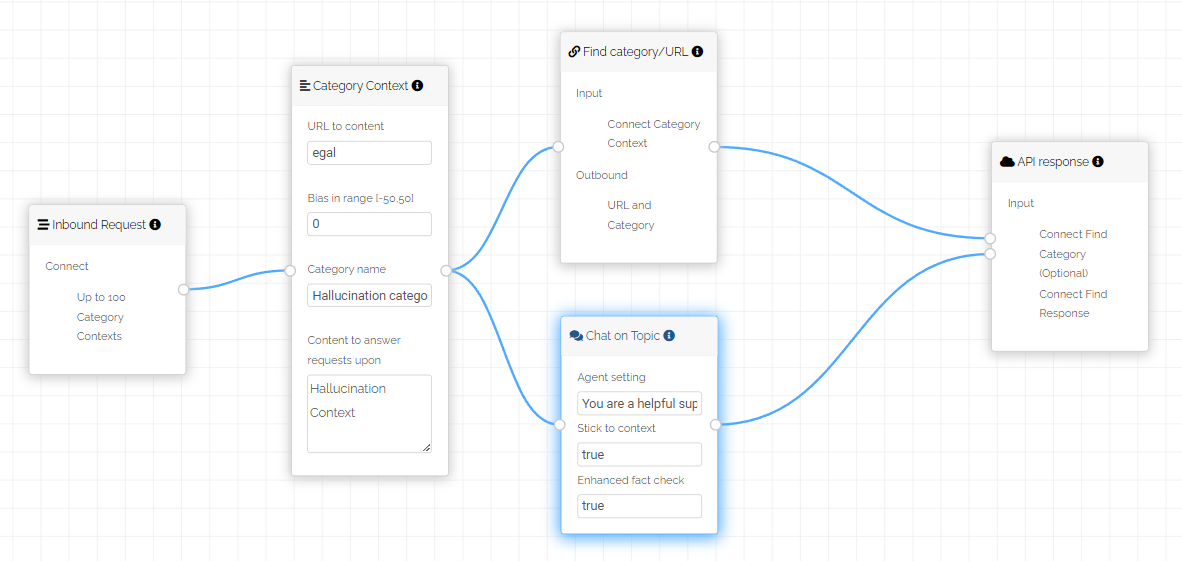
Agents built with using our Chat On Topic widget now support image processing. We have introduced the image API parameter. It allows passing a base64 encoded image string along with the question. It thereby is possible to refer to the image content in the question.
 Moritz Foerster
Moritz Foerster
Base model upgrade to GPT-4o
May 5, 2024
The 'Chat with GPT4' widget now is using the GPT-4o model of OpenAI. It is fully compatible with the rest of the Moses AI widgets. Existing agents build with the 'Chat with GPT4' widget, can be upgraded by clicking the 'Generate Agent' button in the Moses Agent Builder GUI.
 Moritz Foerster
Moritz Foerster
Advanced hallucination controls
May 25, 2023
To tackle one of the core problems of large language models and to make Moses outputs more reliable and usable for business, Moses features enhanced hallucination controls as part of its chat widgets. It thereby imposes output filters that check for hallucinated content. If hallucinated content is detected, the response will indicate that the agent cannot truthfully respond.
 Moritz Foerster
Moritz Foerster
PII redaction widget
Jan 1, 2023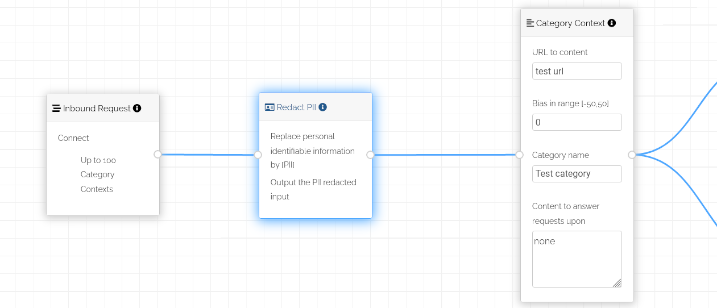
Under the hood of the Moses platform, large language models (LLM) are used to extract semantics of input texts as well as for text generation. At their core, these LLMs are neural networks, artificial replicas of structures that also can be found in the human brain.
Similar to a human mind, also neural networks can become biased, even become racist when trained with a dataset from which certain correlations that we deem discriminating can be inferred. While precautions are taken to reduce the risk of such bias, the nature of mathematical function fitting, which training of neural network resembles quite closely cannot exclude the risk of a LLM being discriminating.
To comply with the General Data Protection Regulation (GDPR), specifically with respect to the Risks to the Rights and Freedoms of Natural Persons it is mandatory to not discriminate based on origin, race, gender or other components of Personal Identifiable Information (PII).
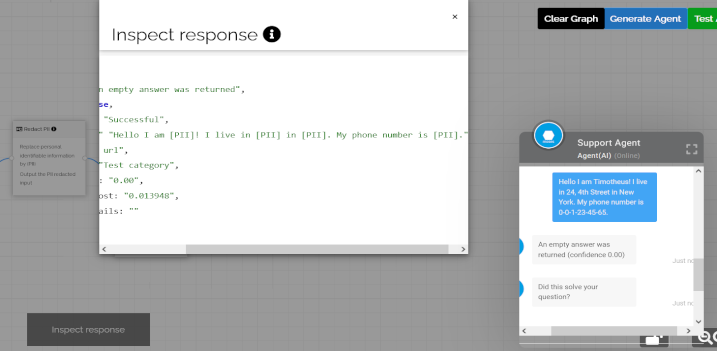
To exclude the risk of discrimination throught the models in place by Moses AI, we introduce the PII redaction widget. It can be placed anywhere in the virtual agents logic and redacts personal identifiable information (PII) in the question and replaces it by `[PII]` and overwrites the question. It is trained to detect PII data such as addresses, credit card numbers, CVV, names, social security numbers.
 Moritz Foerster
Moritz Foerster
Moses complies with GDPR standards
Dec 5, 2022
We are pleased to announce that our service at Moses AI is fully compliant with the European General Data Protection Regulation (GDPR). The GDPR, which went into effect in May 2018, is a comprehensive set of regulations aimed at protecting the personal data of individuals within the European Union (EU). It applies to any organization that processes the personal data of EU citizens, regardless of where the organization is located.
As part of our compliance efforts, we have conducted a thorough review of our data processing practices and have ensured that we are compliant with the GDPR. We have also implemented procedures for obtaining informed consent, as well as for handling requests for data access, rectification, or erasure.
We are committed to protecting the privacy and security of our users' data. Hence, we have ensured that our AI service is designed to process personal data, where personal data is applicable or required, in a secure and transparent manner, ensuring that individuals' rights are protected at all times. We will continue to monitor developments in data protection legislation, and if updates to our service are necessary, we will make them.
If you have any questions about our compliance with the GDPR or about our data processing practices, please do not hesitate to contact us at support@moses-ai.com
 Robert Burke
Robert Burke
Moses supports content moderation for Instagram - Social Suite
Sep 1, 2022
Moses provides a set of widgets specific for the Instagram platform and others that can be used in the social media context. Once you have Moses account you can get started. You can decide yourself if you want to plug the Moses virtual agent into your own application and use it via our HTTP API, or you can use our mobile application that automatically uses the agent logic you have built for it -- It only needs your Instagram user access token, the target account ID and the admin user ID. Use our graphical user interface to build the agent logic. A common use case is to identify and filter rude language.

The rude language filter and the sensitive language widget can be connected to the Instagram Input widget, filtering comments and comment replies that contain sensitive or rude language. In the above example we check whether the filtered language was detected in a comment or a commetn reply. In case of a comment we directly want to hide it. In case of a comment reply, we want the agent to respond with a hardcoded response.
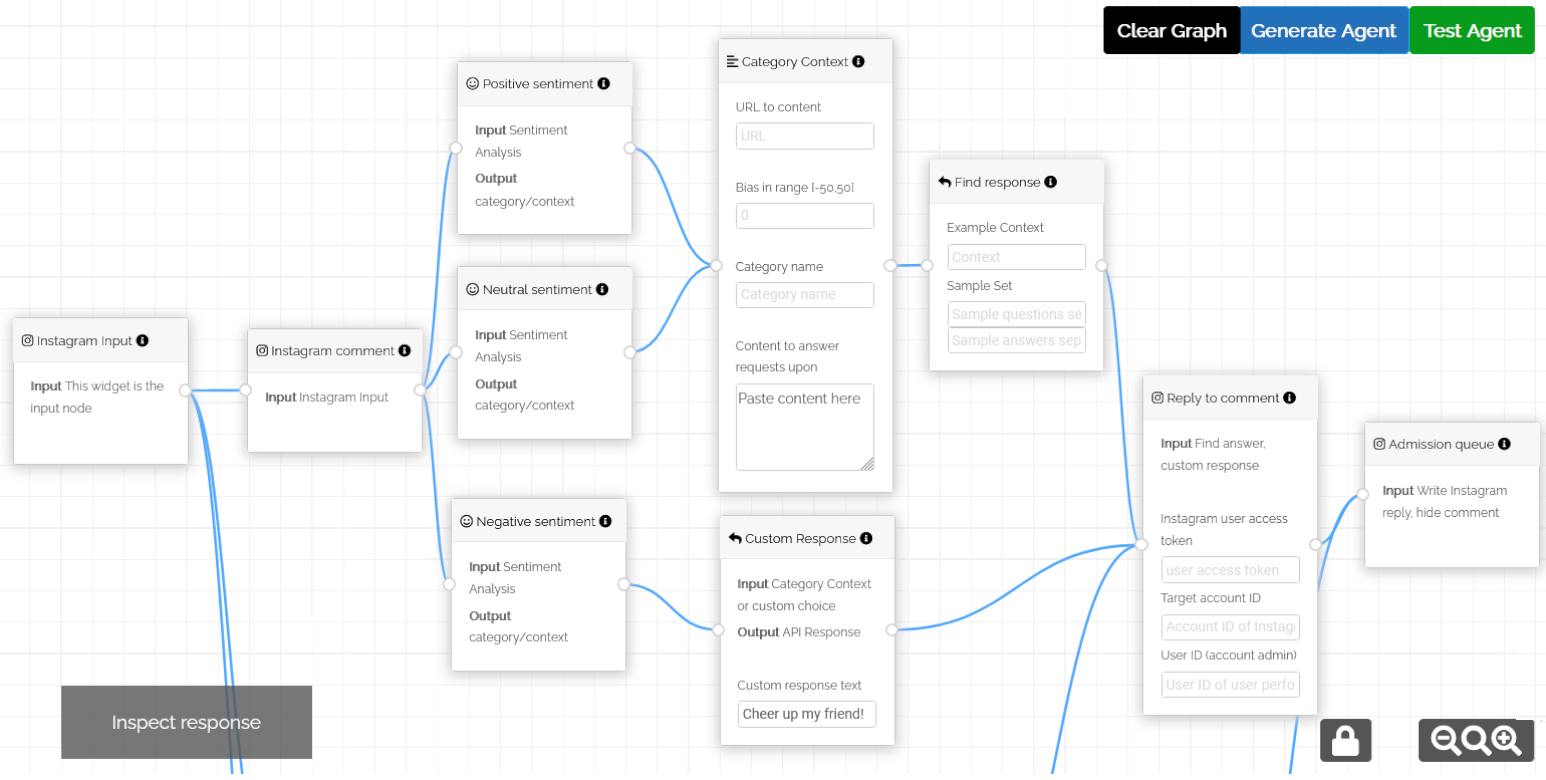
For comments that are not filtered by the language filters, we want our agent to identify the sentiment in the comment. In case of a negative sentiment we want it to try to cheer up the commenter by sending a hardcoded response. In case of a neutral or positive sentiment we want the agent to use its generative AI capabilities to find a response to the comment given the context provided in the category context widget.
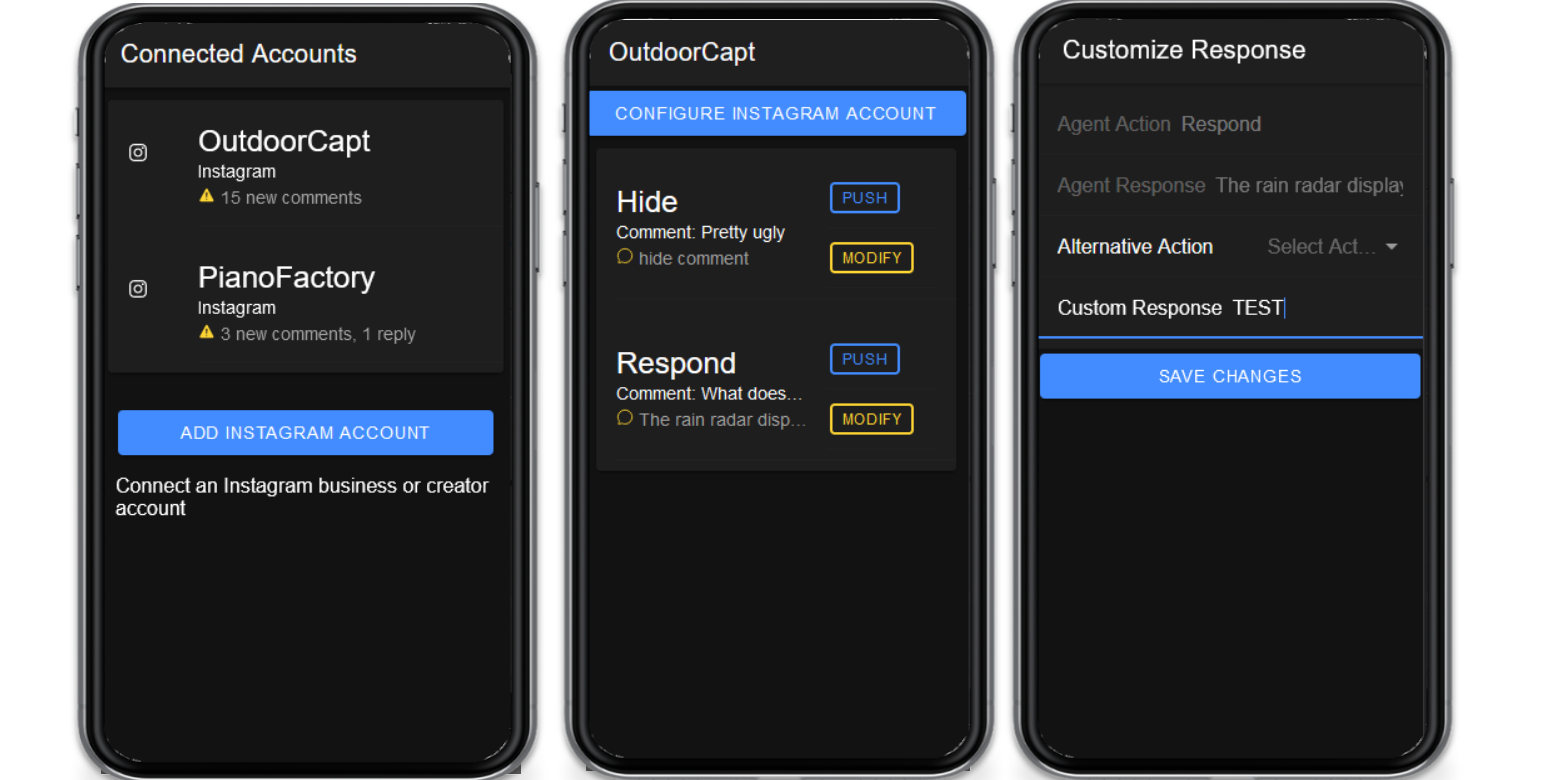
Both the hide comment widget and the write reply widget generate executable HTTP GET requests. Instead of sending these, they are written to the admission queue. This queue allows for adding a human into the loop, who can review and modify response texts and hide actions. Thereby trust into the agent can be built, before moving to a higher level of automation. Our social media moderation mobile application facilitates this process and allows for monitoring and automatically moderating multiple social media accounts.
 Moritz Foerster
Moritz Foerster
Moses features Speech-to-Text widget
Aug 25, 2022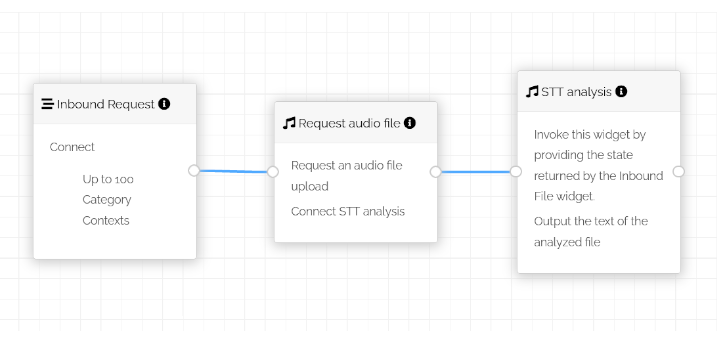
In a push to make Moses virtual agents truly multi-modal, Moses features a Speech-to-text (STT) widget. It is capable of transcribing audio files (in wav or mp3 format) to text that is used in the downstream logic from the STT widget as the input `question` . This feature allows for building virtual agents that can react to human speech. When combined with text-to-speech engines , the Moses API can be used to power conversational agents that do not require written input.
 Moritz Foerster
Moritz Foerster
Image to text via the PDF analysis widget
Aug 10, 2022
The Moses platform now features the PDF analysis widget. In context of a Moses virtual agents logic, it can be applied by first connecting a request PDF upload widget and then a PDF to text widget. The Moses API will prompt for a PDF upload which is then analyzed using optical character recognition. The transcript is then used by the following widgets as the input `query`, opening it to the full suite of Moses widgets to further analyze the transcript and perform actions based on the results.
 Moritz Foerster
Moritz Foerster